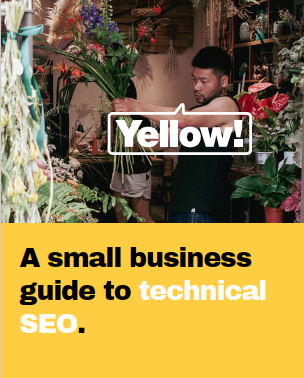Do you feel the need for speed? You should, because site speed plays a big role in SEO and providing a good user experience.
In fact, a jump in page loading time from one second to just three seconds increases the probability that a user will leave the website they’re visiting by 32%. At five seconds this number rises by 90%.
In other words, you don’t have even a second to spare when it comes to loading time – so knowing how to improve your website speed should be a priority.
Here are some quick fixes that you can do to get your website page speed up to scratch in no time.
1. Run a website speed test.
PageSpeed Insights is a free Google tool that you can use to check the speed and performance of any webpage. It will show you how well your site works on both desktop and mobile devices, and it will even give suggestions about what could be slowing down your page speed – so it’s a handy starting point.
2. Optimise your image file sizes.
Any time a user visits your website, their device has to load all of the images that appear on the webpage that they’re landing on. This can cause issues with page speed if your image file sizes are very big.
The optimal file size for website images is around 200KB. For full-screen header and background images, stick to images between 1500 pixels to 2500 pixels wide, and for other images, aim for a max width of 800 pixels.
3. Enable caching.
Caching creates a static version of your webpage that it stores and shows to your returning visitors, decreasing the time to load the site during repeat visits. Some website builders automatically cache website pages, whereas others will require you to add a caching plugin to your site.
RELATED: The why, when and how of updating your website content.
4. Choose a reliable host.
When a person visits your site and loads a page, they’re accessing files from your host’s web server (a remote computer). Unfortunately, cheap hosting usually equates to slower load times – so keep that in mind when setting up your website.
Choosing a reliable host, or even upgrading your website hosting plan, can have a big impact on your website’s page speed, so do some research to compare the speed and reviews for your current host against other hosts and see if you should make the switch.
5. Optimise your website code files.
Decreasing and optimising the size of your CSS, JavaScript, and HTML code files (the files that your website is running on) creates leaner webpages that load faster. This might sound tricky if you don’t have a lot of technical know-how, but the good news is that free plugins like Autoptimize can do the hard work for you by automatically cleaning up your code files.
RELATED: 5 reasons to seek professional help for your website.
6. Use a content delivery network (CDN).
Content delivery networks host and deliver copies of your website’s content from multiple servers located around the world. The benefit of this is that any time a user visits your website, the content will be loaded from the server closest to them, minimising loading time. Popular CDNs include Amazon CloudFront, Google Cloud CDN and Cloudflare CDN. You can either use a CDN in addition to your current host, or choose a website host that provides a CDN that you can enable from your website builder dashboard.
7. Watch out for plugin overkill.
While plugins are great for easily adding extra features and functionality to your website, too many can hinder performance and slow down your website page speed. Aim to minimise the number of plugins you have installed on your website, and disable or delete any you’re not currently using.

